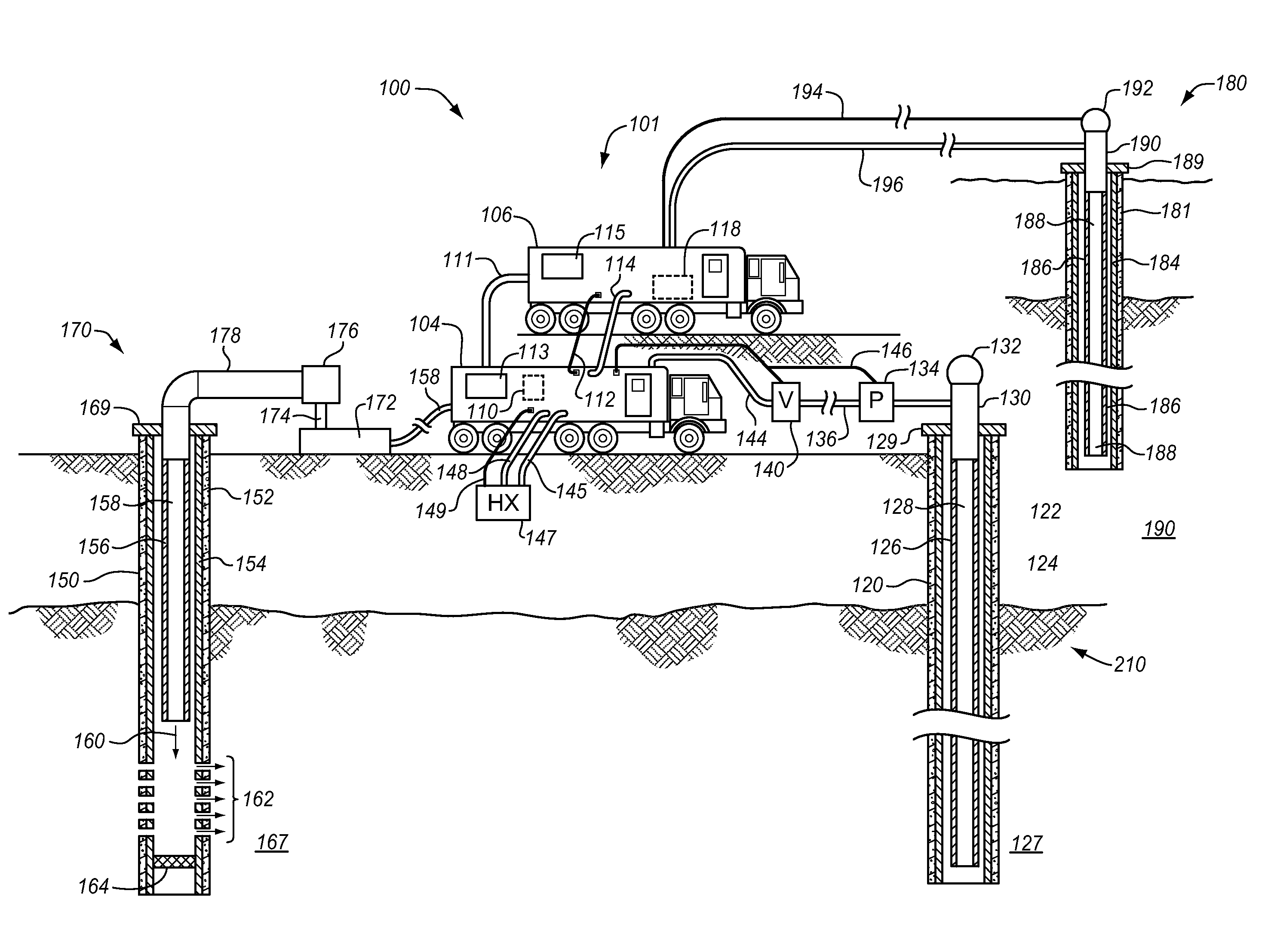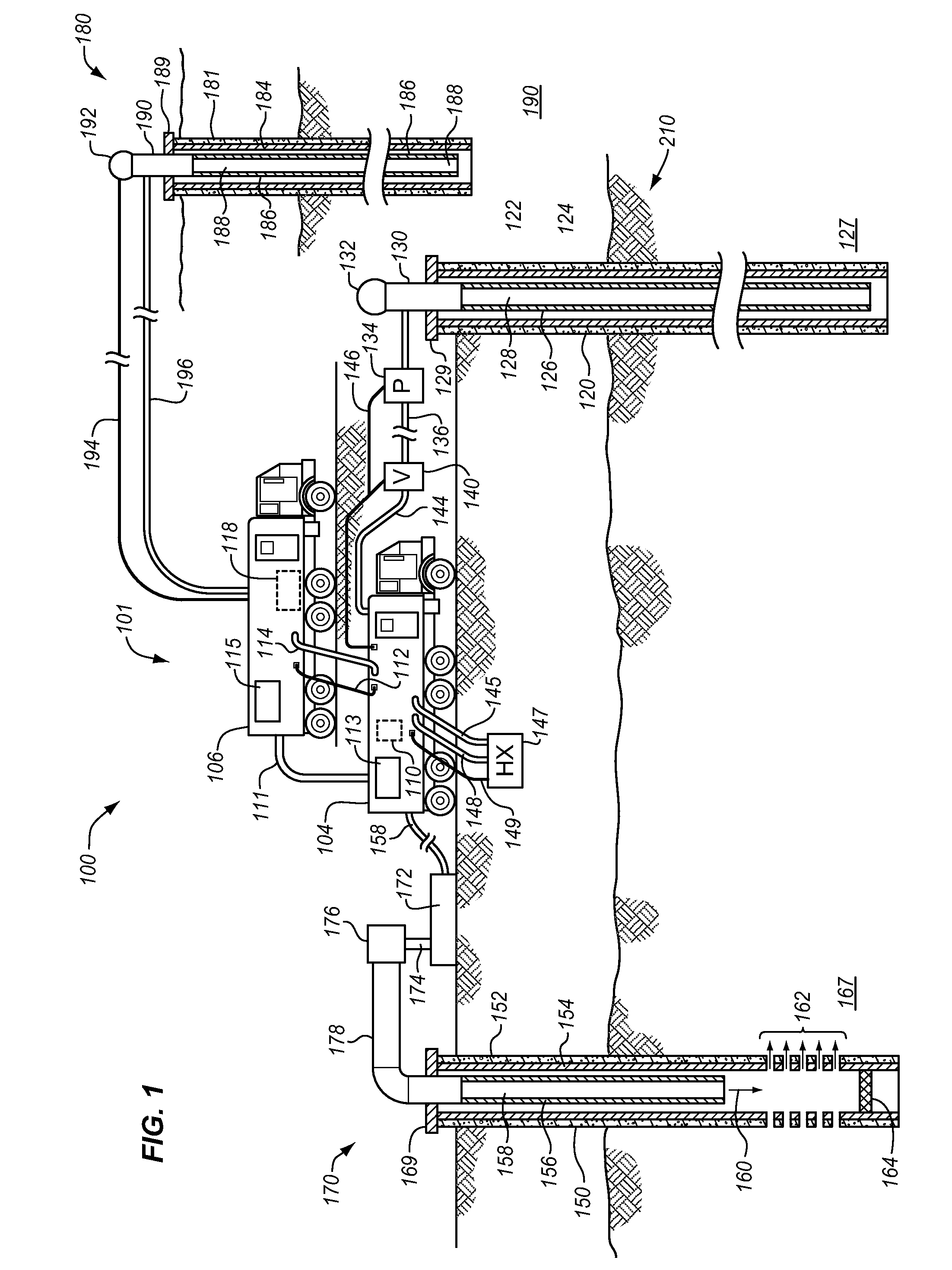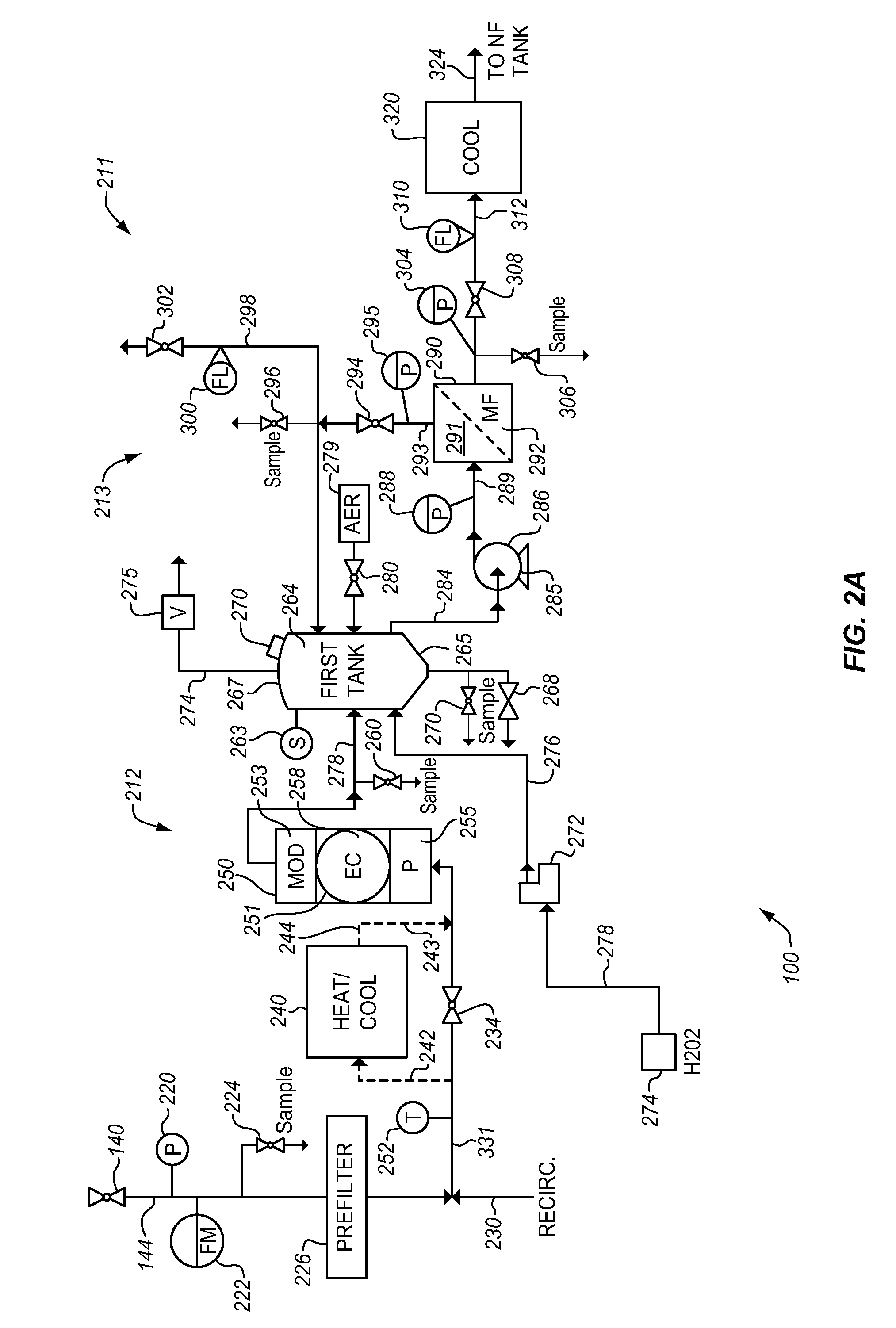Water conversion system
a water conversion system and water technology, applied in water/sewage multi-stage treatment, separation processes, borehole/well accessories, etc., can solve the problems of fracking operations that require millions of gallons of water, overuse and waste, and water is a critically limited resource, so as to inhibit corrosion and eliminate the need for blowing down the circulating water
- Summary
- Abstract
- Description
- Claims
- Application Information
AI Technical Summary
Benefits of technology
Problems solved by technology
Method used
Image
Examples
Embodiment Construction
[0035]Systems and methods for providing chemically homogenous clean water within close geographical proximity to an intended water use area or region are disclosed herein. More specifically, there is described a mobile and environmentally friendly system for removing dissolved materials, thereby reducing total dissolved solids (TDS), and for removing non-dissolved materials, thereby reducing total suspended solids (TSS) from brackish or contaminated water to provide a mobile fresh water and / or potable water source.
[0036]In one exemplary use, the water conversion system converts the water in the brackish water aquifer above oil shale, such as in the Bakken formation in Montana, Wyoming, Saskatchewan, and the Dakotas. Fresh water is provided locally for drilling and fracturing operations, thus saving money and air pollution caused by conventional practices of using trucks to ship water over great distances, sometimes hundreds of miles, to drilling and fracturing sites. Further, it pro...
PUM
| Property | Measurement | Unit |
|---|---|---|
| temperature | aaaaa | aaaaa |
| temperature | aaaaa | aaaaa |
| temperature | aaaaa | aaaaa |
Abstract
Description
Claims
Application Information
 Login to View More
Login to View More - R&D
- Intellectual Property
- Life Sciences
- Materials
- Tech Scout
- Unparalleled Data Quality
- Higher Quality Content
- 60% Fewer Hallucinations
Browse by: Latest US Patents, China's latest patents, Technical Efficacy Thesaurus, Application Domain, Technology Topic, Popular Technical Reports.
© 2025 PatSnap. All rights reserved.Legal|Privacy policy|Modern Slavery Act Transparency Statement|Sitemap|About US| Contact US: help@patsnap.com



